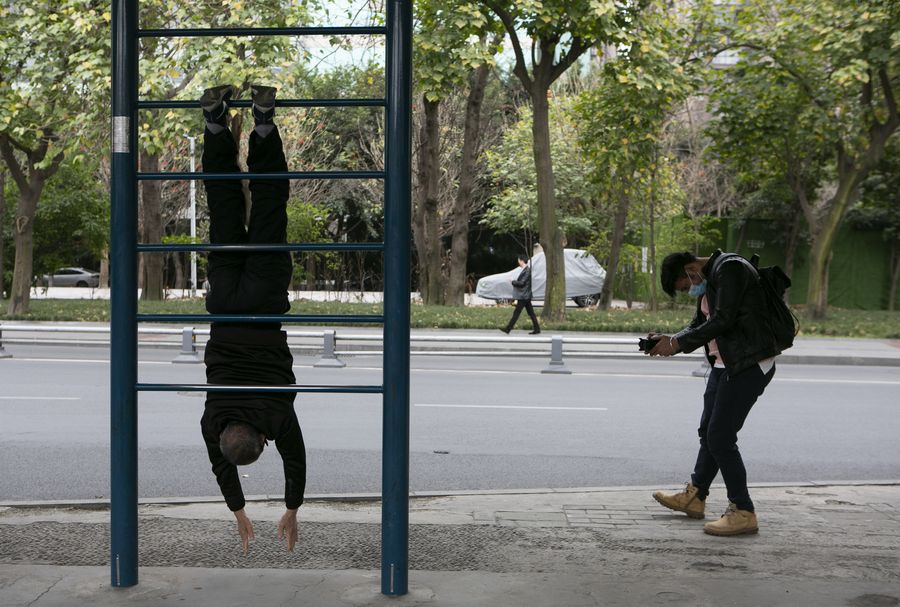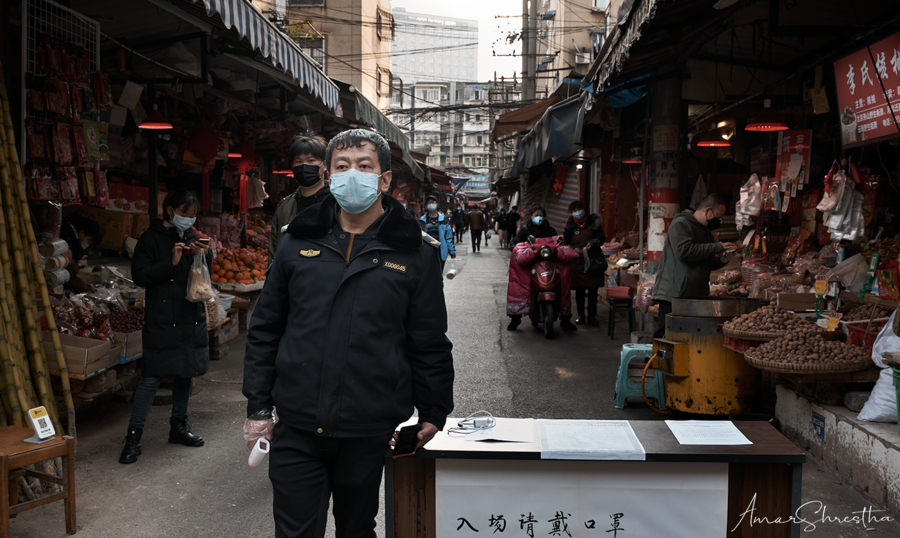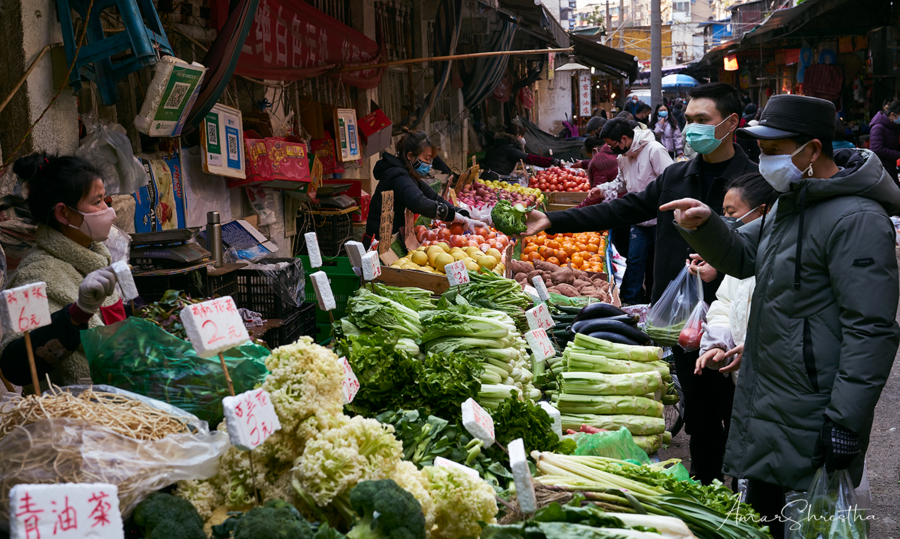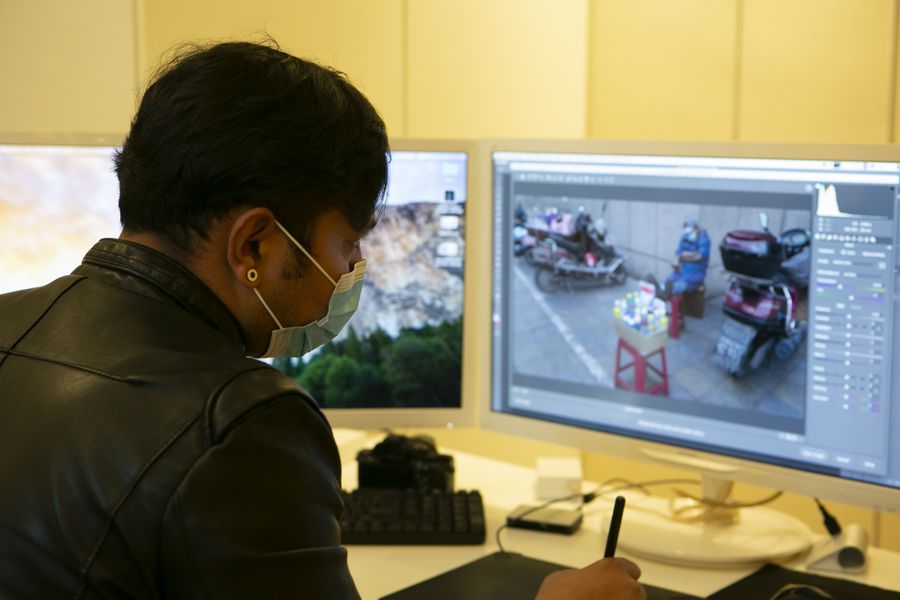
Amar Shrestha photographs an elder in a park in Chengdu, Sichuan Province, southwest China, on March. 10, 2020. (Xinhua/Li Mengxin )
by Xinhua writers Lyu Qiuping, Lu Youyi and Li Mengxin
Seeing some false reports from foreign media since the outbreak of the novel coronavirus, Shrestha, Nepali photographer, decided to record what life is really like in China during the epidemic.
CHENGDU, March 21 (Xinhua) -- Speaking Chinese with a Sichuan accent, Amar Shrestha asked a group of elderly people exercising while wearing masks in a park in Chengdu, capital of Sichuan Province, if he could photograph them.
"Uncle, how old are you?" asked the 29-year-old, a typical Chinese way of starting a conversation with a senior.
"More than 60 years old," responded the elder, who was hanging on a bar upside down.
"You look much younger!" Shrestha said.
The silver-haired elder laughed as the camera captured the scene.
Shrestha, from Nepal, is a self-employed photographer who has lived in Chengdu for three years.
Seeing some false reports from foreign media since the outbreak of the novel coronavirus, Shrestha decided to record what life is really like in China during the epidemic.

Photo taken by Amar Shrestha shows a security guard holding a infrared thermometer at the entrance of a market in Chengdu, Sichuan Province, southwest China, on Feb. 6, 2020. (Provided to Xinhua)
Cleaners, security guards, vendors and couriers were among those photographed. From late January to mid-February, when the hustle and bustle was absent from city streets, he captured couriers busy delivering packages, subway workers guarding stations and volunteers measuring body temperatures.
One of the pictures Shrestha took in the market showed a vendor talking to customers holding bags of vegetables, but he made a point to zoom in on the price tag.
"Some foreign reports said China encountered serious pice hikes amid the outbreak, so I wanted to show that we are eating as we usually do with the prices unchanged," he said.
He posted his works on WeChat and Instagram, some of which were published by media outlets of the Republic of Korea, Thailand and Lithuania.
In a series of photos featuring public transport, he captured passengers wearing masks waiting for buses, empty subway train coaches and bike riders.
He said he wanted to dispute the accusations that people across China were locked at home without any public transport.
"Actually, most Chinese residents have voluntarily stayed at home to protect themselves and others from cross-infection, which I think is amazing and selfless," he said.

Photo taken by Amar Shrestha shows residents buying vegetables at a market in Chengdu, Sichuan Province, southwest China, on Feb. 6, 2020. (Provided to Xinhua)
The photo that moves him the most is one he shot in late January during the Lunar New Year, when a cleaner was the only person on the street.
When he asked the cleaner why he did not return home for the holiday, he said the city fell short of cleaners, prompting him to stay.
As a tribute, Shrestha gave a face mask to the cleaner who treated him with a cigarette in return, a local way of showing gratitude.
"I caught the moment he handed me the cigarette smiling," he said.
Shrestha said Chinese people contributed a lot to the world to curb the spread of the coronavirus, as it is not hard to imagine the huge losses sustained with shopping malls closed and factories suspended.
"It's a choice between economic development and people's health. The Chinese government chose the latter, which is what I really respect," he said.

Amar Shrestha edits a photo at a workshop in Chengdu, Sichuan Province, southwest China, on March. 10, 2020. (Xinhua/Li Mengxin )
Following strict preventive and treatment measures for nearly two months, China has reported no new domestically transmitted COVID-19 cases for three consecutive days.
Of the 81,008 confirmed cases reported on the Chinese mainland by the end of Friday, 71,740 patients have been cured and discharged from hospitals and 6,013 patients were still being treated.
Now that China has basically contained the epidemic, society is gradually back in order, with more and more people appearing in Shrestha's works.
He said talking to numerous people and taking photos here and there was obviously more dangerous than staying at home, but he was proud he could record history as a photographer.
"Compared with the medics, the community workers and volunteers who risk their lives working, what I have done is nothing," he said. ■



